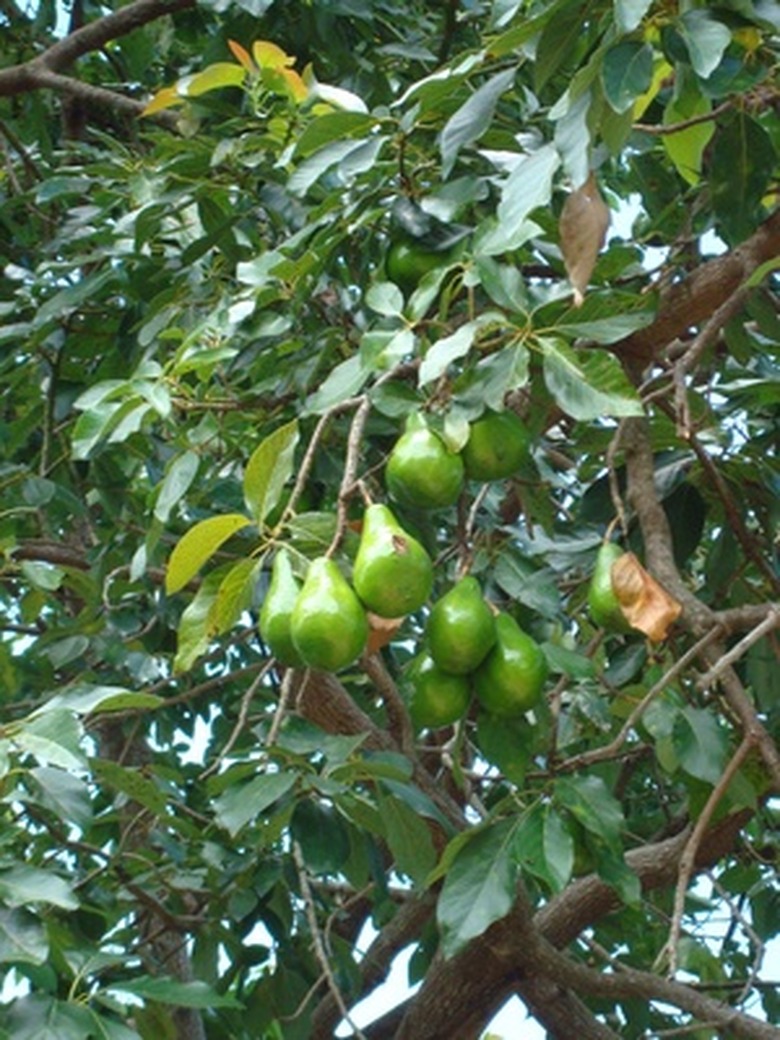Uses Of Trees
Plant trees on your property to provide shade, beauty and style or to serve as food, lumber, firewood, medicine, a windbreak or sound barrier. The type of tree dictates its use, and its use determines the number of trees needed as well as where you should plant them.
Trees for Food
Trees for Food
Many trees provide food, notably fruit trees such as:
- apple
- pear
- apricot
- peach
- cherry
- lemon
- orange
- grapefruit
Climate determines which fruit trees to plant; plant citrus trees such as lemon, orange and grapefruit in warmer locations. Plant trees that provide nuts, such as almond, walnut, and pecan. Not only do these trees provide food, but they also beautify your property and provide shade.
Lumber and Paper
Lumber and Paper
The softwood varieties of trees, including cedar, pine, hemlock and spruce, are used in the manufacture of homes and furniture. Rough lumber, which demands a little more shaping, includes ash, oak, cherry, redwood and maple. Trees also are processed for plywood and ground up and pulped for paper.
Firewood
Firewood
Use dead trees, fallen branches and imperfect pieces of lumber in fireplaces, bonfires and campfires. Additionally, charcoal is derived from charred wood.
Shade
Shade
Large trees with spreading branches are ideal for shade, cutting heating bills when grown near your house, cooling places in the lawn and sheltering smaller plants. Some shade trees include the maple varieties, ash, northern catalpa, honey locust, sweetgum, Kentucky coffee tree, sycamore, tulip and the linden, oak and elm varieties. Shade trees also add interest to the landscape.
Beauty and Interest
Beauty and Interest
Use trees to add interest to your property, particularly the flowering varieties and striking or unusual trees. Among the flowering trees often used for landscaping are dogwood, magnolia, rose of Sharon, oleander, witch hazel, red chestnut, crab-apple, smoke tree, tulip, mountain ash, Japanese snowbell, flowering ash and tree of heaven. Use uncommon and unusual-looking trees to make your home stand out from the other houses on the street. Among these trees are cucumber magnolia, Chinese date, amur corktree, acacia, catalpa, European beech, European hornbeam, sawtooth oak, katsura, Turkish filbert, false cypress and umbrella pine.
Windbreak, Sound Barrier and Privacy
Windbreak, Sound Barrier and Privacy
Planting tall trees close together serves as a windbreak and sound barrier. In addition, they add privacy to a piece of land. Established trees cut wind velocity and help prevent snow from drifting onto your property. They can reduce the cost of heating and cooling homes because they cut the wind. As a side benefit, they prevent blown dust and protect gardens, plus they attract wildlife, including songbirds. These trees include, but are not limited to, pine, locust, spruce, birch, cedar and fir.
Medicine and Cooking
Medicine and Cooking
Some medicines are derived from trees. For example, the allspice tree, native to the Caribbean and parts of Mexico, has berries that, when crushed, are used in cooking and added to various medicines that relieve colic. A Malaysian palm tree produces a seed that can treat animals infested with worms. Harvest poplar buds for cold medicines and ointments. The Benjamin tree of Java is used for inhalers to treat bronchitis. Camphor trees from Japan and China are mined for muscle pain ointments. The bark of dogwood trees can be used as a quinine substitute. The nux vomica tree of Asia produces strychnine and is used in concert with other substances to act as a heart stimulant. The sassafras tree's bark can serve as a diuretic.
Cite This Article
MLA
Rabe, Jean. "Uses Of Trees" sciencing.com, https://www.sciencing.com/uses-of-trees-13424418/. 21 July 2017.
APA
Rabe, Jean. (2017, July 21). Uses Of Trees. sciencing.com. Retrieved from https://www.sciencing.com/uses-of-trees-13424418/
Chicago
Rabe, Jean. Uses Of Trees last modified March 24, 2022. https://www.sciencing.com/uses-of-trees-13424418/
